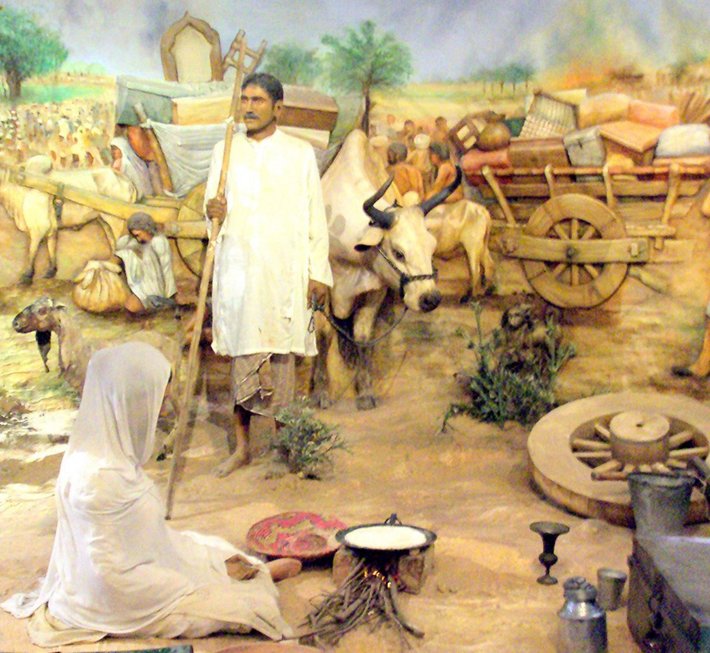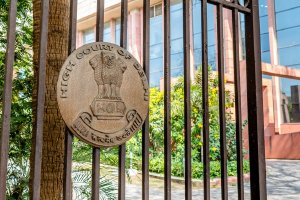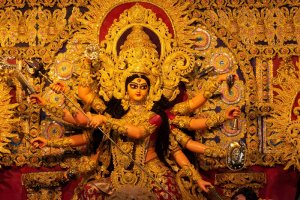For the first time since Hindu-majority India and primarily Muslim Pakistan were freed from British colonial rule in one of the most disruptive mass migrations in modern history 75 years ago this August, a YouTube channel is reuniting Muslim and Sikh survivors of that traumatic event.

The channel, called Punjabi Lehar, is the brainchild of Nasir Dhillon, a 38-year-old police officer turned real estate developer in Pakistan. With 602,000 followers, the channel features interviews with survivors of the Indian Subcontinent’s partition in 1947 and stories of their reunions.
Dhillon, who is Muslim, launched Punjabi Lehar in 2016 in a business partnership with Bhupinder Singh Lovely, a Sikh who also lives in Pakistan. Dhillon was inspired to start the channel because his grandfather and father who migrated to Pakistan from India died before they could realize their dream of one day revisiting their ancestral village.
“They had a good life in Pakistan, but always yearned to go back to their village in Amritsar,” Dhillon told the BBC, referring to the capital of the Indian state of Punjab. The sprawling, largely agricultural region was divided between Pakistan and India with partition.
Punjabi Lehar grabbed media headlines in India in January 2022 when a video featuring a poignant reunion between two brothers after 74 years went viral. The younger brother, Sikka Khan, remained in India with their mother after partition, while his elder sibling, Sadiq Khan, ended up across the border with their father.
Sikka earned a living as a laborer on a village farm owned by a Sikh family. Like some other Muslims in the village who chose to remain in India, he is shown in the YouTube video wearing a Sikh turban. Despite their appearance as Sikhs, however, many such people continue to practice Islam.
The two brothers were reunited after a man from Sikka’s village in India glimpsed an appeal made by Sadiq in a video posted on Punjabi Lehar.
“There is no bigger virtue than reuniting loved ones,” Dhillon said of the roughly 100 family members he has helped reunite, in addition to the others he has enabled to visit their ancestral villages.
Dhillon and Lovely ran into several people looking for lost family members at Nankana Sahib, a historic Sikh temple in Pakistan’s Punjab province named after the most revered figure in Sikhdom—the 15th-century founder of the Sikh religion, Guru Nanak Dev.
“In the beginning, we didn’t really have a strategy,” Dhillon said, referring to his and Lovely’s encounters with people in search of lost relatives. “We would note down the details of people looking for family members and post them on our social media accounts.”
As the videos posted gained attention and prominence following a few successful reunions, Dhillon and Lovely decided to dedicate a channel exclusively for connecting people separated by the partition of India.
The two friends and business partners chose the name Punjabi Lehar for their channel because it translates as “Punjabi Wave,” a metaphor for an unstoppable ocean tide.
Dhillon and Lovely were flooded with requests from people across Punjab’s divide to help them find loved ones they haven’t seen in over seven decades.
It is often the last wish of many partition survivors to cross over to the other side of Punjab and reestablish cultural connections, Anam Zakaria, a Canada-based journalist and educator of Pakistani descent told The New York Times in an August 13 article titled, “Survivors of Partition Seek Closure Through an Unlikely Source: YouTube.”
“Too many people have already passed away with this desire unfulfilled,” said Zakaria, who is the author of the 2015 book, The Footprints of Partition: Narratives of Four Generations of Pakistanis and Indians.
“Against this context,” she added, “the way in which Punjabi Lehar is fostering connections and reunions provides a window of hope and closure, at a time when we are at the brink of losing the partition generation.”
Urvashi Butalia, a noted Indian activist and author of the 2000 book, The Other Side of Silence: Voices from the Partition of India, told the Times that while other cultural projects, including student exchanges, have attempted to bring Indians and Pakistanis together, Punjabi Lehar is unique because it celebrates Punjab’s distinct identity.
“It harks to an identity that existed before partition,” Butalia said, “and in some ways continues after—a regional, linguistic, cultural identity, which links people together despite religious differences and rejects the assumption the British made at partition, that the only identity that needed to be foregrounded was the religious one.”
_______________
From its beginnings, the Church of Scientology has recognized that freedom of religion is a fundamental human right. In a world where conflicts are often traceable to intolerance of others’ religious beliefs and practices, the Church has, for more than 50 years, made the preservation of religious liberty an overriding concern.
The Church publishes this blog to help create a better understanding of the freedom of religion and belief and provide news on religious freedom and issues affecting this freedom around the world.
The Founder of the Scientology religion is L. Ron Hubbard and Mr. David Miscavige is the religion’s ecclesiastical leader.
For more information visit the Scientology website or Scientology Network.


